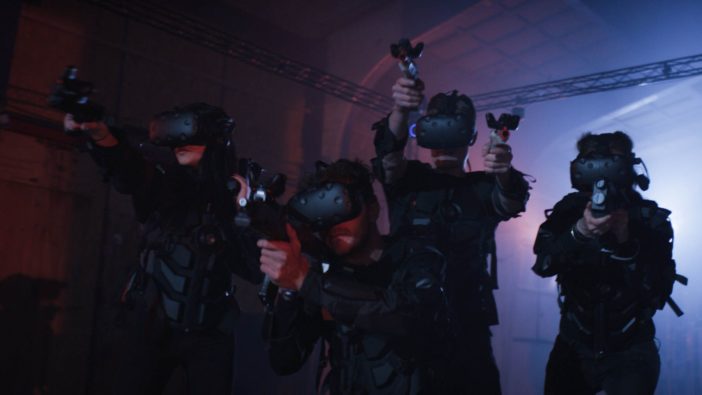
Virtual Reality VS Augmented Reality For Group Activities
Technology is transforming the way we engage in group activities, particularly with the advent of Virtual Reality (VR) and Augmented Reality (AR) in the entertainment realm.
These technologies offer unique experiences that can immerse users in virtual worlds or enhance their perception of the real one. Let’s delve into the distinctions between VR and AR, focusing on their applications for group activities and their broader impact on daily life.
VR and AR Defined
Before comparing their applications, it’s essential to understand the fundamental differences between VR and AR.
Virtual Reality entails a computer-generated simulation that completely replaces the user’s vision and reality, creating an immersive, fantasy environment.
On the other hand, Augmented Reality superimposes computer-generated images on the user’s view of the real world, enhancing the existing reality with additional information or interactive elements.
VR and AR in Groups
VR Activities
VR involves hardware like VR headsets and motion controllers, offering fully immersive experiences that replace the user’s actual surroundings. While VR activities can be limited to smaller groups, they provide limitless possibilities for virtual locations, missions, and puzzles within VR escape rooms and VR shooting games.
AR Activities
AR, exemplified by games like Pokémon Go, integrates virtual elements into the real world. It is more accessible for group activities due to its widespread availability on smartphones and affordable, less bulky equipment like smart glasses. AR offers a unique blend of real-world interaction and digital augmentation.
Choosing Between VR and AR for Group Activities
The decision between VR and AR for group activities depends on the desired experience, availability, and cost.
VR is ideal for those seeking full immersion with a strong gaming aspect and cinematic narratives. At Omescape, we have plenty of VR games like Eclipse, Ascenders, Arizona Sunshine, and Rotten Apple, to enjoy.
On the other hand, AR is suitable for providing an experience rooted partly in the real world, catering to inexperienced players and accommodating larger groups more cost-effectively.
Impacts on Everyday Life
Beyond group activities, both VR and AR are influencing how we perceive and interact with the world. AR, with its applications in smartphone apps and games, has made information more accessible and interactive in various real-life situations.
VR, with its immersive capabilities, is not only transforming the gaming industry but also finding applications in education and exploration, allowing users to virtually visit places and experiences previously inaccessible.
VR games at Omescape London
As technology continues to advance, the integration of VR and AR into everyday life is inevitable. Whether it’s exploring new worlds in VR or enhancing our surroundings with AR, these technologies offer exciting possibilities for both group activities and personal experiences.
Visit Omescape London to experience our huge range of VR escape rooms and VR shooting games. From navigating a steampunk dystopia, to busting ghosts, we have it all! Get in contact with our team today, or book a VR experience with us.